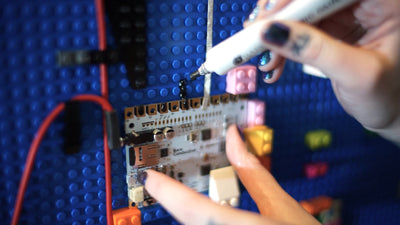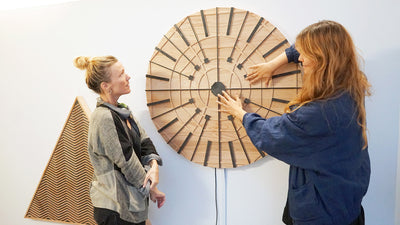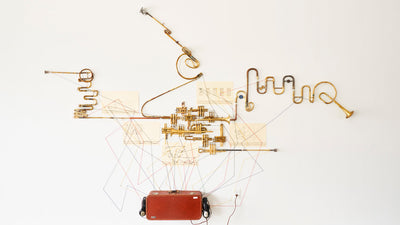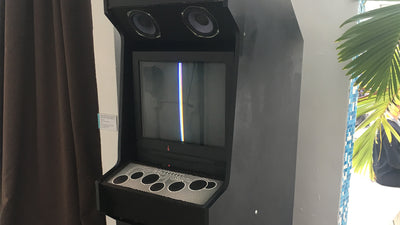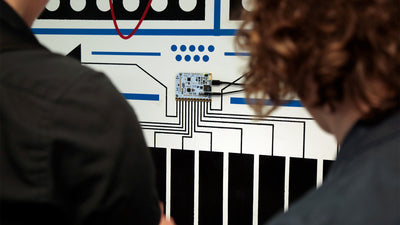Wind Chimes - Using Wind To Make Sound

Artist and radio producer Jeff Kolar explored wind and sound in his new installation Wind Chimes and collaborated with Nicholas Davis to create a sound installation.
We had the pleasure to have a quick chat with Jeff where we went through this amazing project and learned more about his concept and techniques.
It’s a pleasure to see that your new project, Wind Chimes, was a success. Last time we spoke about the radio installation at the Museum of Contemporary Art Chicago where you collaborated with Jon Cates. Could you tell us a bit about how the radio project influenced your work on Wind Chimes?
My collaboration with Jon Cates at the Museum of Contemporary Art Chicago a reimagining of radio as a more mobile, spatial, and flexible artistic medium. Our performances utilise an array of electronic and analog instruments, as well as devices designed and fabricated by hand. We were interested in creating new electromagnetic infrastructure that proposes alternate narratives and experiences.
My practice as an artist always involves collaborating with new people, things, and devices. The Wind Chimes piece grew from experimentation with the Touch Board as a tool for kinetic, mobile sound installation. I worked with Nicholas Davis for programming assistance to help customise the Bare Conductive Touch Board to integrate into the design of the wind chimes.
Sound is one of the main elements in your projects. Can you tell us what sound means to you and what is the message you’d like to communicate through it?
Most all of my projects use sound as the primary element of the work. Sound, as a medium, is flexible. It can be performed live, recorded, broadcasted on the radio, installed in galleries, played outside, and released as special objects like cassettes, vinyl records, etc. I’m most interested in using sound as a tool, a material. My art practice and methodology differ project to project although all of my work seeks to activate sound in unconventional, temporary, and ephemeral ways. It also often investigates the mundane sonic nuances of everyday electronic devices.
What was the process behind Wind Chimes?
The entire fabrication and design of the wind chimes were made over a two month period in Summer of 2016. With the help of Nicholas Davis, we built three acoustic copper wind chimes that were designed to hang in trees outside of Antena Gallery in Chicago’s Pilsen Neighbourhood. Accompanying each chime was a Touch Board that triggered electronic wind compositions I produced for each chimes and tree. A speaker was hung in the tree next to the wind chime, creating a duet for acoustic chimes and electronic wind. In addition, I also constructed an indoor installation of similarly hung speakers for a special live performance of the work.
The project consists mainly of three copper wind chimes attached to custom electronics hung in the trees on the sidewalk outside the gallery. The chimes are wind-powered and, in addition to the sound of the copper resonating, nearby speakers play electronic sounds. A small sound work is also on display inside the gallery proper.
Nicholas Davis: Fabricating the wind chimes so that they were both conductive and acoustically pleasant, then programming the Touch Board to play back samples based on which chime was hit with the clapper. We also had to fabricate a base for the Touch Board and the amplifier chip that would connect to the wind chimes and the speaker. There was a lot of drilling, wire stripping, and soldering involved.
Making the wind chimes conductive was tricky at first, but after a few prototypes we figured out an elegant solution that didn’t clutter the chimes with wires. We used speaker wire both as a conducive and mechanical connection from the chimes and clapper to the base that hold them all together. The weight of the chimes and clapper, which were all made of copper, helped gravity keep a solid connection between them and the speaker wire that held them without solder or adhesives.
What kind of materials did you use to achieve the best possible result?
We used copper for the chimes because of its conductivity, acoustics, and beauty. We also needed a material that could resist extreme weather because the wind chimes were hung outdoors for the entire month of July 2016. One element that is difficult to deal with in outdoor public sound installations is weather.
You’re familiar with the Touch Board and its features. Can you tell us how it was used differently this time around, and what were the obstacles you encountered?
In the past, I’ve primarily used the Touch Board as a Live instrument for playback. Wind Chimes used the Touch Board to power the entire installation, and was how the audience could experience the amplified sound. One challenge was figuring out how the Bare Conductive could run and operate without access to a power supply. We built custom hangable units that included a mobile battery charger. This small battery helped power the Touch Board and homemade amplifier needed for speaker playback. The Touch Board ended up being an excellent tool to jump power from one device to the next, allowing us to only use one battery source for multiple electronics.
What other technical skills did this project require?
We had to hire an arborist to consultant on installation of the work so high up in trees. Since the wind chimes were permanently hung above, we wanted to make sure we designed and fabricated a system so the chimes and the Touch Board wouldn’t get blown away by the wind and hurt someone below. In the end, we ended up drilling into the tree to properly mount the chimes and electronics.
Listening to the Wind Chimes sounds provokes a nostalgic and mysterious feeling. What did you want to observe and study through this soundscape?
The electronic compositions for Wind Chimes were an investigation into the sound of the wind and pink noise. I was very influenced by the pairing of pink noise and wind chimes to aid in sleep and relaxation. So, for the compositions, I wanted to take the “wind” in “wind chime” very literally and try to produce electronic sounds that echo the whistle of wind moving. Each of the three tracks in the album release reflect this, but also call for a moment of relax.
Do you have any future plans that you’d like to share with us?
I am working on a new work titled INTERCOM that will premiere as an outdoor sound installation in October of 2016 at RadioRevelten International Festival of Radio Art in Halle/Salle, Germany. The work will include an installation of a custom intercom network mounted outside the front door entrance of the building and on each floor of the building. The INTERCOM system will allow for open communication and playback of on-hold original compositions.
You can check another project made by Jeff Kolar and Jon Cates, where they used radio as their medium for the Museum of Contemporary Art Chicago.
Images: Jeff Kolar
Want to build your own interactive sound installation? Explore the Touch Board and learn how to connect conductive objects to the Touch Board.
Read about a similar installation: Ghost Box by Steve Parker
We love it when you share your projects! Post your project on Instagram, YouTube, Vimeo, or Twitter, and make sure to tag @bareconductive or use #bareconductive. You can also send your videos and photos to info@bareconductive.com. Submit your project for a chance to be featured and you'll also receive 20% discount.


